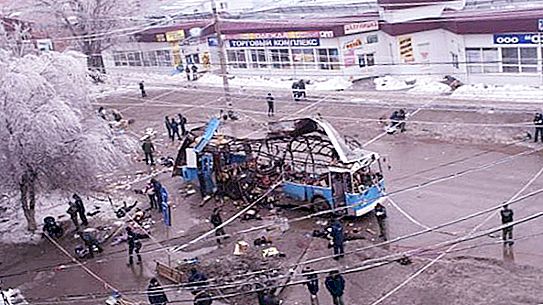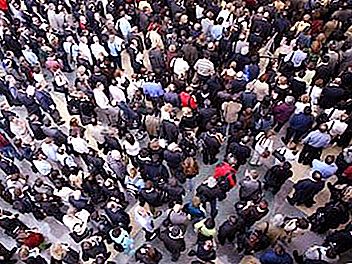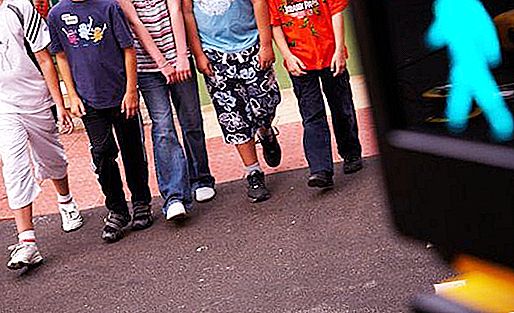What happened in Volgograd in December 2013, many know. The townspeople remembered this time for two terrorist attacks: on December 29 the explosion occurred at the central railway station, during the day, on December 30 there was a second explosion, this time in the trolleybus, following route No. 15A.
Train station explosion
The explosion occurred two days before the start of the new 2014, 45 minutes after noon (Moscow) in the building of the central railway station of the city of Volgograd. The power of the device was more than ten kilograms of TNT.
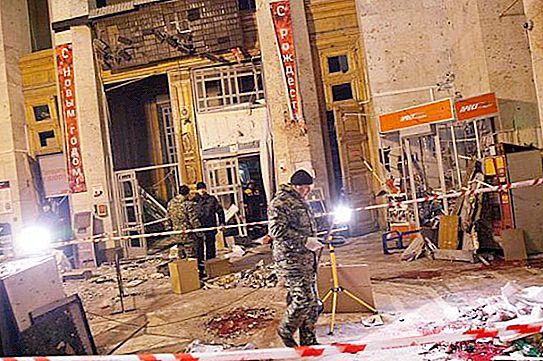
An explosion rang out on the ground floor between the frames of metal detectors. At first, the experts suggested that the explosive device was triggered by a woman, but later it turned out that the man did it. Police officer D. Makovkin at the entrance to the railway station building tried to stop a suspicious man for inspection. He turned out to be a terrorist and, seeing that a policeman was heading for him, immediately launched a bomb. Senior sergeant died in the explosion.
At the scene of the explosion, a F-1 grenade (unexploded) was later discovered, which was quickly neutralized by the arming experts.
Victims of the terrorist attack at the railway station
The number of victims of the terrorist attack in Volgograd amounted to eighteen people, fourteen of them died at the scene of the incident, and four died from injuries during several days in the hospital. Almost fifty people are injured; thirty-four people were hospitalized in medical institutions. Nine victims were evacuated by medical helicopters to Moscow.
Among the wounded are six policemen who served at the railway station, two children, residents of the Ivanovo, Moscow, Volgograd regions, the Republic of Udmurtia, two Tajik citizens and a citizen of Armenia.
After the terrorist attack in Volgograd at the station, by the decree of Russian President Vladimir Vladimirovich Putin, Russian Railways and transport police officers who distinguished themselves in the line of duty were awarded state awards. Dmitry Makovkin was posthumously awarded the Order of Courage. If it weren’t for the senior sergeant, the terrorist would have been able to draw attention inside the building and detonate the device in the waiting room. There would be more victims.
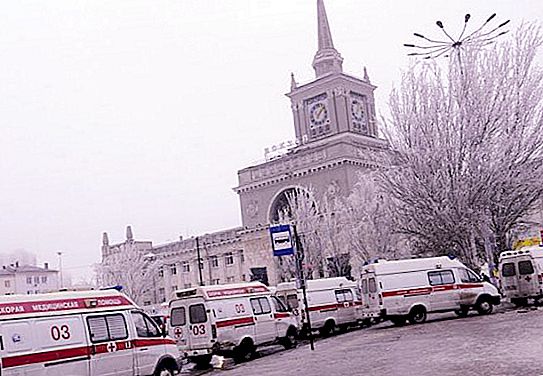
They were also awarded the Order of Courage by Sergeant Major Sergei Belly, Senior Sergeant D. Uskov, Sergeant D. Shantyr, Passenger Inspector S. Nalivaiko (posthumous). Police officers E. Petelin, A. Kilesov, Vitaliy Tsyganov, inspection inspectors N. Dudin, S. Chebanu, D. Andreev (posthumous) were awarded the Medal “For Courage”.
Yellow hazard level
From nineteen hours Moscow time, a yellow hazard level was declared in Volgograd. The decision to establish such a regime is taken by the federal authorities. A high ("yellow") hazard level is introduced in cases where there is a confirmed danger of a terrorist attack, but the time and place of the incident are unknown. This mode involves:
- the issuance of additional police patrols involving dog training in public places;
- strengthening inspection at railway stations, airports, metro facilities, bus stations and so on;
- additional briefing of police officers and personnel of objects that are likely to become targets of a terrorist attack;
- informing the public about the behavior in the event of a terrorist attack;
- introduction of unscheduled measures to search for persons involved in the commission of a terrorist act, in transport, alleged objects of terrorist acts;
- checking the readiness of personnel of organizations that may become objects of assault, special units, practicing actions to curb the threat and save the victims;
- identification of places suitable for temporary accommodation of people in the event that a counter-terrorist operation is introduced;
- transfer of medical facilities to high alert.
Explosion of a trolleybus of route No. 15A
During the day, another terrorist attack occurred in the city - the explosion of a trolleybus in Volgograd occurred at 8:25 on the thirtieth of December. The trolleybus followed route No. 15A from one of the sleeping areas to the center of Volgograd. When the trolley passed Kachinsky market, near the stop. "College of Business", an explosion occurred in the cabin. Power amounted to about four kilograms of TNT.
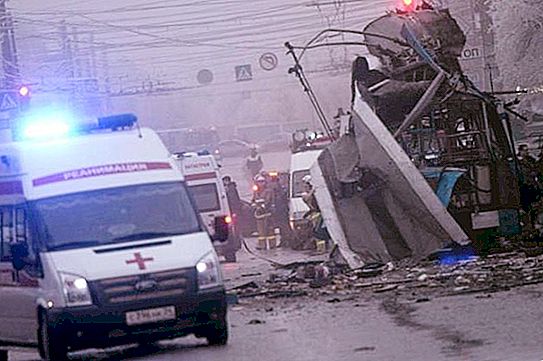
According to preliminary data received by the special services, the bomb was activated by a suicide bomber. As a result of the attack, the trolleybus was completely destroyed, and glass was broken in the nearest houses.
Eleven people died at the scene of the tragedy, and three more died at the stages of sanitary evacuation. Twenty-seven injured were hospitalized in hospitals. Later, two more wounded died in hospitals. Six victims were evacuated to Moscow on board the Emergencies Ministry. The main injuries were penetrating wounds, injuries and cuts, concussions, fractures, ruptures of the tympanic membranes, concussions, and skull fractures.
At the scene, all operational services worked. More than four and a half hundred people were involved, more than 120 pieces of equipment.
Investigation of the attacks in Volgograd
On the fact of the explosion at the central railway station, law enforcement authorities opened a case under Articles 222 (arms trafficking) and 205 (terrorist attack). A criminal case was also opened on the explosion in the trolley bus under Articles 205 of the Criminal Code of the Russian Federation and 222. The investigation did not initially exclude the possibility that the attacks at the railway station and the trolley bus were connected. Later this assumption was confirmed, since the damaging elements of the explosive devices were identical.
Criminal proceedings were also instituted under Articles 105 (murder of two or more persons in a generally dangerous way, committed by a group by prior conspiracy, for reasons of hatred or hostility for religious, national, ideological or political reasons), 111 (causing grievous harm), 167 (destruction of property)
Actions of the Ministry of Emergency Situations and federal authorities
The Ministry of Emergency Situations provided employees and equipment for the speedy elimination of the consequences of terrorist attacks, as well as a special board for the evacuation of those seriously affected by terrorist attacks in Moscow.
The section of the road on which the attack in Volgograd occurred connected the sleeping area with the city center. After the incident, traffic on this section of the road was suspended, the city authorities organized additional routes.
After the explosion at the railway station, a three-day mourning was declared in the region (when the second terrorist attack occurred, the mourning continued until the third of January 2014). Some recreational activities were canceled not only in Volgograd, but also in other areas.
In the New Year’s address of Vladimir Putin to the Russians, the president addressed the topic of terrorist attacks in Volgograd. He said that Russia will confidently continue the fight against terrorists. On January 1, the President of Russia visited the victims in hospitals, laid flowers at the site of the attack and held a briefing in the regional administration on the fight against terrorism.
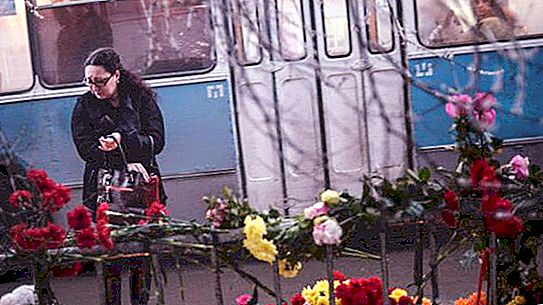
On the same day, the clergy held a prayer service in front of the icon of the Blessed Virgin Mary, which was delivered to Volgograd from Moscow. Then they circled the city with an icon on a helicopter.
Payments to victims and relatives of victims
Through social security agencies, relatives of victims of the attacks were paid one million rubles each from the regional budget and one million more from the federal budget. All victims received from two hundred to four hundred thousand rubles. A total of 100 million rubles were allocated for compensation from the regional and federal budgets.
The insurance company, in which the carrier was insured, and the Union of Insurers reported that payments to persons injured in incidents will be made according to the standards established by law, despite the fact that the risk of terrorist acts is not covered by the insurance law. In case of death, the payment is more than two million rubles, for damage to health - up to two million (depending on the severity of the injury).
The reaction of society and the public
Immediately after the attack, rumors began to spread about other explosive devices, which were allegedly laid in several parts of the city. Representatives of the administration and the Ministry of Internal Affairs denied these rumors, but residents themselves began to refuse trips in transport and presence in crowded places. Some supermarkets closed for fear of new attacks.
After the incidents, which were not the first terrorist attacks in Volgograd in 2013, the question arose about the correspondence of the governor to the post, the resignation of the head of the city administration and some security personnel.
On December 30, 2013, the memory of those who died in Volgograd was honored in Moscow. In solidarity with the victims and their families, people brought flowers to the Government building of the Volgograd Region. They commemorated the victims of the terrorist attacks in Volgograd and in Kiev. People on the Euromaidan in the capital of Ukraine lit about two hundred candles.
Operation "Whirlwind-antiterror"
After the attacks in the city, a special operation "Whirlwind-Antiterror" was carried out. Law enforcement agencies and the Ministry of Emergencies were taken under enhanced protection of life support facilities. The airport, hotels and hostels, river and car stations, gas stations, hotels were checked, and attics and basements of buildings were also checked.
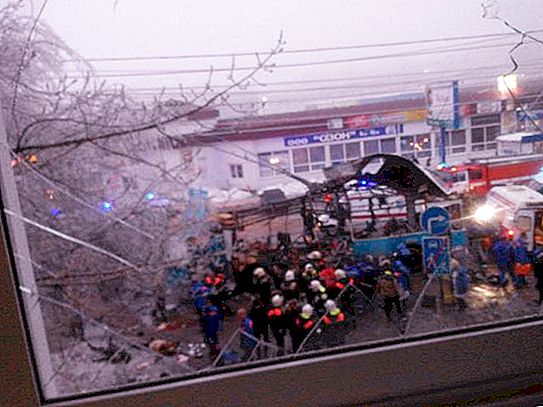
Citizens actively provided special services, reported suspicious people and objects, and organized voluntary patrols together with the police.
On the last day of 2013, the operational headquarters in Volgograd reported that almost five kilograms of narcotic substances and dozens of rifled and smooth-bore firearms were seized.
Responsibility for a terrorist act
The terrorist group Ansar al-Sunna took responsibility for the attacks in Volgograd - information appeared on the website of the Chechen separatists Kavkaz Center. According to the Associated Press, the incidents are “Vilayat Dagestan” (“Jamaat Sharia”) - an underground organization from the North Caucasus, which set as its goal the secession of Dagestan from the Russian Federation.
Establishing the circumstances of the attacks
During the investigation of the terrorist attacks in Volgograd, the circumstances of the incidents were established, in which thirty-four people died, seventy-eight were hospitalized. Sources in the intelligence services reported that the terrorists arrived in Volgograd on December 29. One of them killed himself in the station building, and the second watched the terrorist attack from the square, the next day the second terrorist staged an explosion in a trolley bus.
The identities of the terrorists were established on January 30, 2014. They were members of the terrorist group Asker Samedov and Suleiman Magomedov. At the same time, Magomednabi and Tagir Batirovs were detained on the territory of the Republic of Dagestan, who transported Samedov and Magomedov to Volgograd in a truck, disguising them with bales of hay.

